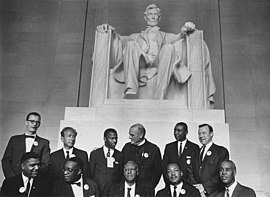
Back حركات الحقوق المدنية Arabic Movimientu polos derechos civiles AST নাগরিক অধিকার আন্দোলন Bengali/Bangla Moviments pels drets civils Catalan Bürgerrechtsbewegungen German Movado por civitanaj rajtoj Esperanto Movimiento por los derechos civiles Spanish Eskubide zibilen mugimendua Basque جنبش حقوق مدنی Persian Kansalaisoikeusliike Finnish
This article needs additional citations for verification. (June 2010) |

Civil rights movements are a worldwide series of political movements for equality before the law, that peaked in the 1960s.[citation needed] In many situations they have been characterized by nonviolent protests, or have taken the form of campaigns of civil resistance aimed at achieving change through nonviolent forms of resistance. In some situations, they have been accompanied, or followed, by civil unrest and armed rebellion. The process has been long and tenuous in many countries, and many of these movements did not, or have yet to, fully achieve their goals, although the efforts of these movements have led to improvements in the legal rights of some previously oppressed groups of people, in some places.
The main aim of the successful civil rights movement and other social movements for civil rights included ensuring that the rights of all people were and are equally protected by the law. These include but are not limited to the rights of minorities, women's rights, disability rights and LGBT rights.